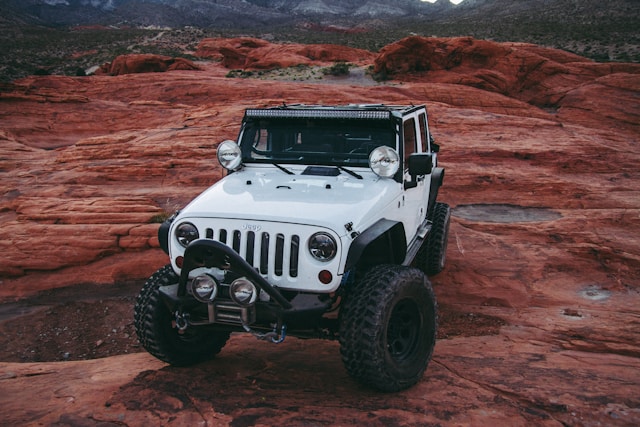When it comes to modifying a Jeep, few upgrades have the impact- visually and functionally- of a suspension lift!
If you plan to use backcountry trails or want to give your vehicle a more aggressive stance, lifting your Jeep can help! The right Jeep lift could change how it performs on and off the road! However, before you consider lift kits, it may help to understand which would be suited for your needs.
Understanding the Types of Jeep Lift Kits
Before you choose a lift kit; first, understand what options are available! These Jeep lift kits serve different purposes, and the right fit would depend on how you use your Jeep.
Body Lift Kits
These are usually the most economical choice! They raise the body away from the frame using spacers, without modifying the suspension system. This kind of lift adds just enough space for slightly larger tires- usually up to one or two inches- and the purpose is improving aesthetics. While it doesn’t add clearance under the chassis, it can give your Jeep an intense look.
Suspension Lift Kits
These offer more functionality! These lifts raise the frame and suspension and improve ground clearance and articulation. These aspects are important for off-roading! This type of lift allows for significantly bigger tires and improves how the Jeep handles uneven terrain. Depending on the height, suspension kits may require longer shocks and brake lines to ensure safety.
Leveling Kit
Another option is a leveling kit, which adjusts the front of your Jeep to match the rear. Many Jeep models come with a forward rake- lower in the front than the back. A leveling kit helps even this out and provides a mild lift without drastically changing the ride quality.
Choosing The Right Lift Height
Once you know the types, the next consideration is lift height! How high you go will affect how your Jeep looks or drives!
A one to two-inch lift is perfect if you want a subtle increase in height! It enables tire clearance and improves appearance. You do not need major modifications in this case and can keep most of the original features of your Jeep.
If a more aggressive build is the goal, you need 2.5 to four inches of lift for a noticeable boost in clearance and capability. At this height, changes to suspension geometry are more prominent! You may need upgraded shocks, control arms, and a new track bar for safer handling.
Lifts over four inches are reserved for serious off-roading! These setups allow for very large tires and extreme articulation. However, they demand more from you mechanically. You will probably need longer driveshafts and upgraded steering components, with professional installation.
Factors to Consider Before Buying a Lift Kit
When installing a lift kit, you need to ensure the components match your goals! A few key factors can help guide this decision!
Firstly, think about how you plan to use your Jeep! If it is mainly for driving in the city or light trails, a basic lift or leveling kit may be enough. For rock crawling or deep mud trails, a suspension lift will serve better.
Tire size plays a major role, too. Larger tires usually come with a lift, but not all kits do not accommodate every size! Make sure the lift kit supports your planned tire diameter and will not cause rubbing during turns or articulation.
Ride comfort and handling are also important. A big lift changes how your Jeep responds, particularly when you are cornering or have to apply emergency stops. In such an instance, upgrading shocks and sway bars will help in maintaining safety and comfort.
Lastly, think about the costs. Aspects like installation, alignment, and add-ons like brake lines or driveshafts can increase the total costs. It may help to consult a professional in case you are not certain what a full install may involve.
Endnote
Installing a suspension lift is probably the most effective way to transform your Jeep- in terms of capability and character! When you want to improve off-road performance or just make it stand taller on the road; knowing what suspension lift would be best suited will help you make the right decision.
So, take the time to assess how much lift would be practical for your need, what components you need, and how the changes will affect your driving experience.


